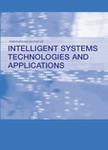版权所有:内蒙古大学图书馆 技术提供:维普资讯• 智图
内蒙古自治区呼和浩特市赛罕区大学西街235号 邮编: 010021

作者机构:Department of Computer Science and Engineering International Institute of Information Technology BhubaneswarOdisha751003 India Department of Computer Science and Engineering SOA University BhubaneswarOdisha751030 India
出 版 物:《International Journal of Intelligent Systems Technologies and Applications》 (Int. J. Intell. Syst. Technol. Appl.)
年 卷 期:2021年第20卷第1期
页 面:25-46页
核心收录:
学科分类:0810[工学-信息与通信工程] 12[管理学] 1201[管理学-管理科学与工程(可授管理学、工学学位)] 08[工学] 0835[工学-软件工程] 0811[工学-控制科学与工程] 0812[工学-计算机科学与技术(可授工学、理学学位)]
主 题:Authentication
摘 要:Internet of things (IoT)-enabled smart home means all the home appliances are connected to the internet. All these devices are monitored and controlled using a mobile device, iPhone, or iPad regardless of location or time constraint. In an IoT-based smart home network, associated users and devices need to be recognised otherwise unauthorised access reduce the security and privacy of the smart environment. In this paper, contributions are first proposed as an elliptical curve cryptography-based authentication protocol for fog nodes and users in the IoT-based smart home environment. Secondly, the simulation for security analysis of the proposed authentication protocol using AVISPA tools has been done. Thirdly, BAN logic is used to verify that the devices in the smart home environment have achieved the security goals. Finally, a comparison with some existing works has been done and it has been seen that proposed protocol achieved better security goals in a smart home environment. Copyright © 2021 Inderscience Enterprises Ltd.